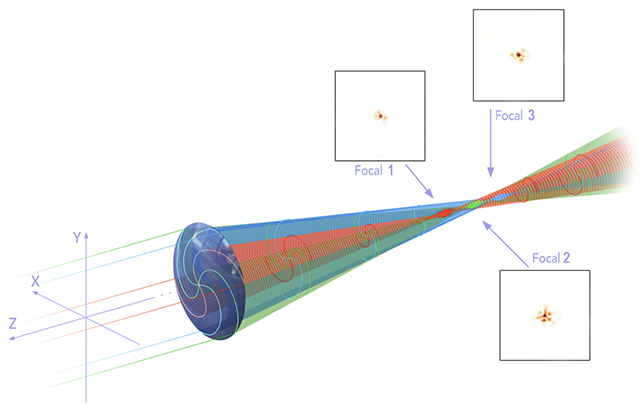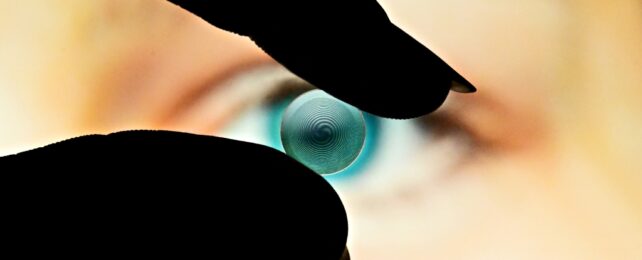Scientists have designed a striking new contact lens that could revolutionize ophthalmology. It's based on a spiral pattern that lets the eye focus at different distances and in varying lighting conditions.
Beyond contact lenses, its inventors say the tech could be applied to a range of miniaturized imaging systems, including consumer gadgets like virtual reality headsets, to offer more versatility and flexibility than existing lenses.
The lens, called a spiral diopter, causes incoming light to spin in an optical vortex, making allowances for the various deformations in the cornea of the eye that can happen as we age.
"Unlike existing multifocal lenses, our lens performs well under a wide range of light conditions and maintains multifocality regardless of the size of the pupil," says Bertrand Simon from the Photonics, Numerical and Nanosciences Laboratory (LP2N) in France.
"For potential implant users or people with age-related farsightedness, it could provide consistently clear vision, potentially revolutionizing ophthalmology."

Right now, older people with conditions like farsightedness and cataracts can use progressive lenses to focus at different distances, with different parts of the glass having different magnification strengths.
Here, everything is put in a single lens that's also much smaller, and without the distortions that can happen around the wearer's peripheral vision, thanks to applying a spiral based on Fermat's spiral.
While the researchers are still some way off from being able to mass-produce spiral diopter contact lenses, they have run simulations and laser tests showing the lens working as intended. Experiments with volunteers have also had promising results.

"Creating an optical vortex usually requires multiple optical components," says Laurent Galinier, from the optics company SPIRAL SAS in France. "Our lens, however, incorporates the elements necessary to make an optical vortex directly into its surface."
"Creating optical vortices is a thriving field of research, but our method simplifies the process, marking a significant advancement in the field of optics."
This is all very positive, but there's still plenty of work to do: the team says that further investigation is needed to understand the exact nature of the optical vortices (or twisted light) produced by the spiral diopter.

After that, the technology will need to be tested in eyewear for people with less than perfect vision, in real-world scenarios. The researchers also mention a range of other applications in cameras for everything from drones to self-driving cars.
"In addition to ophthalmology applications, the simple design of this lens could greatly benefit compact imaging systems," says Simon.
"It would streamline the design and function of these systems while also offering a way to accomplish imaging at various depths without additional optical elements."
The research has been published in Optica.
